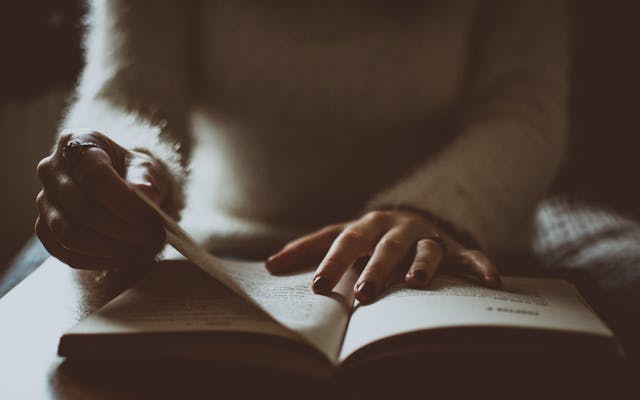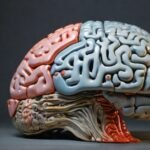
Step into the captivating realm of Renaissance literature – where enlightenment meets imagination!
This era, spanning from the late 14th century to the mid-17th century, produced works that continue to inspire us today.
In this article, we delve into the key characteristics of Renaissance literature, explore famous authors who shaped its course, and uncover the profound impact it had on society.
Let’s embark on our journey through time together!
Key Characteristics of Renaissance Literature
Renaissance literature, blooming between the 14th and 17th centuries, was a vibrant tapestry woven from several key characteristics:
- Read also: Renaissance Art Vs. Medieval Art
- Read also: Exploring Italian Renaissance Sculptures
Humanism
This philosophy, emphasizing human potential and individuality, replaced the medieval focus on the afterlife.
Writers celebrated human achievements, explored emotions and psychology, and created complex characters grappling with worldly concerns.
Think of Hamlet’s introspective struggles or the cunning manipulations of Shylock in “The Merchant of Venice.”
Classical inspiration
Writers turned to the works of ancient Greece and Rome for inspiration, incorporating themes, myths, and literary forms. Ovid’s “Metamorphoses” influenced Shakespeare’s “A Midsummer Night’s Dream,” while Virgil’s “Aeneid” inspired Marlowe’s “Dido, Queen of Carthage.”
This classical influence led to explorations of heroism, love, fate, and the power of the gods.
Realism and observation
Renaissance writers moved away from idealized depictions and embraced the complexities of human nature.
They observed and documented the world around them, incorporating details of everyday life, social structures, and political landscapes.
Think of Chaucer’s vivid portraits of pilgrims in “The Canterbury Tales” or Montaigne’s insightful essays reflecting on human experience.
Celebration of language and form
The Renaissance saw a renewed appreciation for the beauty and power of language.
Writers experimented with sonnets, ballads, and other forms, using metaphors, similes, and other figures of speech to create vivid imagery and convey emotions.
Shakespeare’s sonnets and Milton’s epic poem “Paradise Lost” stand as testaments to this linguistic mastery.
Exploration and discovery
The spirit of the age was fueled by voyages of discovery and the pursuit of knowledge.
This translated into themes of travel, adventure, and the expansion of human understanding.
Works like Thomas More’s “Utopia” and Bacon’s “New Atlantis” explored ideal societies and scientific advancements, reflecting this fascination with the unknown.
Religious and social commentary
While often veiled in allegory or satire, Renaissance literature tackled religious and social issues.
Writers questioned authority, explored the role of the Church, and critiqued social injustices.
Think of Marlowe’s subversive “Doctor Faustus” or More’s veiled critique of the monarchy in “Utopia.”

Famous Renaissance Literature Authors
The Renaissance was a vibrant period for literature, and countless talented authors contributed to its rich tapestry.
Here are some of the most famous, representing various countries and genres:
Italy
- Dante Alighieri (1265-1321): Known for his epic poem “Divine Comedy,” a journey through Hell, Purgatory, and Paradise, which established Italian as a literary language.
- Francesco Petrarca (Petrarch) (1304-1374): A key figure in Humanism, renowned for his sonnets and love poetry, setting the standard for Petrarchan style.
- Giovanni Boccaccio (1313-1375): The author of “The Decameron,” a collection of stories filled with humor, satire, and social commentary.
- Niccolò Machiavelli (1469-1527): Famous for his political treatise “The Prince,” offering controversial advice on statecraft and power.
England
- William Shakespeare (1564-1616): Arguably the greatest playwright in history, crafting timeless tragedies, comedies, and histories like “Hamlet,” “Romeo and Juliet,” and “Macbeth.”
- Christopher Marlowe (1564-1593): Rivaling Shakespeare, known for his dramatic works exploring ambition and morality like “Doctor Faustus” and “Tamburlaine.”
- Edmund Spenser (1552-1599): Renowned for his epic poem “The Faerie Queene,” an allegory celebrating virtue and chivalry.
- Sir Thomas More (1478-1535): A humanist scholar and statesman, known for his utopian social commentary in “Utopia.”
Spain
- Miguel de Cervantes (1547-1616): Author of the satirical masterpiece “Don Quixote,” a story about a delusional knight-errant and his squire, considered the first modern novel.
- Lope de Vega (1562-1635): A prolific playwright known for his innovative use of dramatic form and his portrayal of love and honor in works like “Fuente Ovejuna” and “The Dog in the Manger.”
France
- François Rabelais (1494-1553): Famous for his satirical epic “Gargantua and Pantagruel,” filled with humor, fantasy, and social commentary.
- Pierre de Ronsard (1524-1585): Leader of the Pléiade, a group of poets who championed French language and literature, known for his sonnets and love lyrics.
Other notable authors
- Geoffrey Chaucer (1343-1400): English poet considered the “Father of English poetry,” known for “The Canterbury Tales,” a collection of stories told by various pilgrims.
- Torquato Tasso (1544-1595): Italian poet famous for his epic poem “Jerusalem Delivered,” a tale of Christian knights in the Crusades.
- Erasmus of Rotterdam (1466-1536): Dutch scholar and humanist, known for his witty and insightful critiques of society and calls for reform.
Impact of Renaissance Literature
The influence of Renaissance literature cannot be understated.
Its contributions to art, culture, and education have left indelible marks throughout history.
Development of national literatures
Prior to the Renaissance, most literature was written in Latin which limited readership mainly to educated elites.
Renaissance writers pioneered the use of local vernacular languages in their works.
This allowed common people to enjoy literature for the first time, leading to an explosion of distinct national literatures across Europe.
Enrichment of cultural heritage
The literary masterpieces of the Renaissance have stood the test of time and continue to profoundly influence global culture today.
Characters like Romeo, Juliet, Don Quixote and Faust have become enduring icons.
Renaissance philosophies inform modern thinking on politics, ethics and existence.
Art, architecture and music echo Renaissance styles.
Advancement of critical thinking
Renaissance writers examined the human experience through new lenses which encouraged readers to question established norms and beliefs.
Thinkers like Thomas More envisioned radically different societal structures in his seminal Utopia.
Playwrights such as Shakespeare explored universal themes of love, betrayal, ambition and death – issues which confront humanity across generations.
Promotion of human rights
Renaissance authors railed against repressive feudal structures and systems of privilege that valued royal birthright over individual merit, action and ambition.
Writings advocated greater equality among classes based on talent and virtue rather than inherited status.
Female perspectives were explored in the works of pioneers like Christine de Pizan.
While full equality was not achieved, new ideas took root regarding universal human rights and resonate to this day.

- Read also: Exploring Famous Renaissance Architecture
- Read also: Exploring the Splendor: Spanish Renaissance Architecture
Conclusion
great literature fosters radical empathy, allows us to walk in the shoes of giants, vagabonds, lovers and fools.
Through rhythm and verse we inhabit the minds of Hamlet and Desdemona.
We experience fleeting beauty and the sting of betrayal along with them. Their joys and pains become our own.
This emotional resonance binds our shared humanity across the ages.
The Renaissance birthed literary masterworks whose wisdom, wit and capacity to uplift endure through present day.
May we continue learning from and adding our own chapters to this living tradition.
FAQs
Renaissance literature emphasizes humanism, individualism, and realism, departing from the religious and allegorical themes prevalent in medieval literature.
While fewer women wrote during this era due to gender restrictions, Christine de Pizan stands out as a pioneering figure whose work defied convention. Other noteworthy figures include Veronica Franco and Modesta di Pozzo.
Shifting to vernacular languages allowed writers to connect with broader audiences and address issues relevant to everyday life, thereby expanding the scope of literature beyond the confines of academic discourse.


